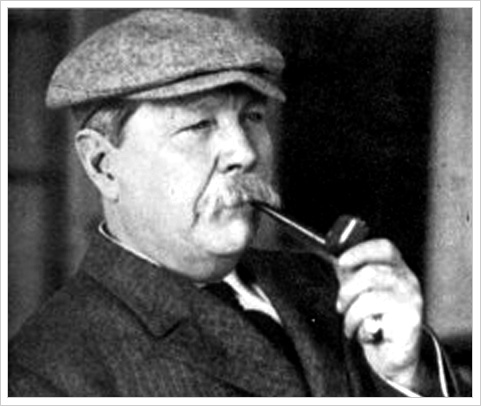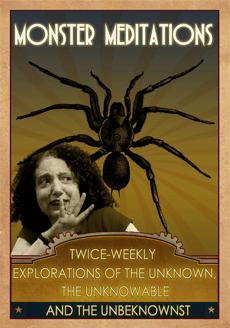A friend told me about a TV channel that plays a weird selection of old and very old movies. It’s not an ART film station; it’s popular culture plain and simple. Early on Sunday mornings it often plays Sherlock Holmes films from the Basil Rathbone, Nigel Bruce vintage. I remember watching these movies over and over again as a child and I’m drawn to them still. Now, I’m much more conscious of the differences between the films based on Arthur Canon Doyle’s stories versus the movies featuring Sherlock Holmes battling Nazi spies.
I can’t say that all the movies based on the original short stories are great, but they hold up better than those placing the late 19th century detective in a car on the hunt for microfilm in Washington DC during WWII. I settled onto the sofa one recent Sunday morning when I saw that ‘The Hound of the Baskervilles’ had just started. Much of it followed the story as written so when the glaring differences appeared, they jumped out at me. Not just because they undermined the author’s intentions, but because they were obviously necessitated by the protocols of the times or the role of the film medium in the 40s—as opposed to the written word.
SPOILER ALERT—The following will reveal too much of the mystery if you have never read the book and might cause you to pause if you’ve seen the old movie.
In the original story, the beautiful Beryl Stapelton is introduced as the enigmatic and oddly reluctant ‘love interest’ of Sir Henry Baskerville, a gentleman who has just inherited Baskerville Hall. Dr. Watson can’t imagine why her brother is opposed to the match. Watson sees a clear attraction and Sir Henry is a “catch” that any family would approve of. On top of that, the Stapeltons live in the neighborhood so Jack would not lose the company of his beloved sister. Later in Doyle’s story, it is revealed that Beryl & Jack are man and wife and that she wasn’t entirely on board with his dastardly scheme to kill Sir Henry and inherit the Baskerville estate as a distant, less-than-legitimate, relation.
In the movie, Jack is just as villainous as in the book, but Beryl is indeed his sister (or stepsister) and she is deeply in love with Sir Henry. Doyle did not write a Hollywood ending with a mystery solved AND a wedding announcement. He wrote a darker, more complicated and subtle plot with disturbing relationships between men and women, including Jack conniving and promising marriage to another woman in the story. The movie wraps it all up with a ribbon, but it’s not as interesting.
Books made into movies get altered in various ways and often to suit the tone of the time and not as a direct reflection of the author’s original themes. Sometimes the movie is better—but not that often.






I don’t remember the storylines of the original Conan Doyle books well enough, but on general principles, I think whichever you see first, is usually the one that stays with you. I read Dune the book first and loathe every single film adaptation that came out. By contrast, I watched The Innocents [an adaptation of the Turn of the Screw] first, then I read the original story. It..just didn’t measure up. This is the scariest scene in any horror movie I have ever watched:
https://youtu.be/rDYtZUj2sMk
Still gives me the creeps.
The medium——and the intended audience of the end result——often shade the transformed work of fiction. It’s true that what you experience first, sticks most, but… There are times when going backwards also works. For decades movies needed happy endings, wedding scenes, and other cliches. Now we need more action, more violence, more intensity in romantic relationships, than often appears in the originating book or story.
As for the Sherlock Holmes originals, I went back to the source on a whim and starting reading/rereading them. It’s inspiring (wink) very inspiring. Especially the stories that get to the core of people and motivations. There’s a lot of dated stuff about people being “types” that can be racist, sexist and totally ridiculous, but at the core the emotional content is often surprising.